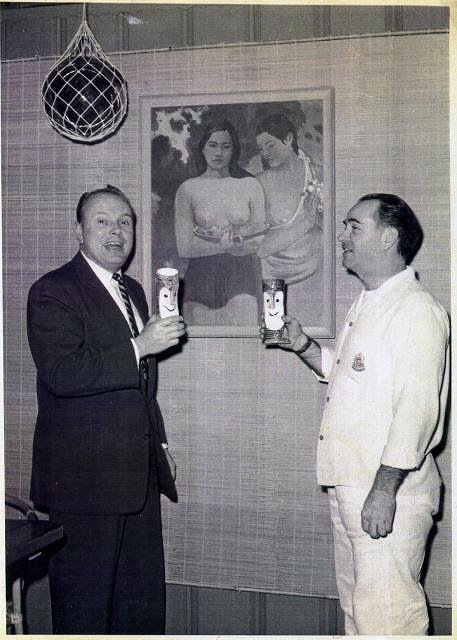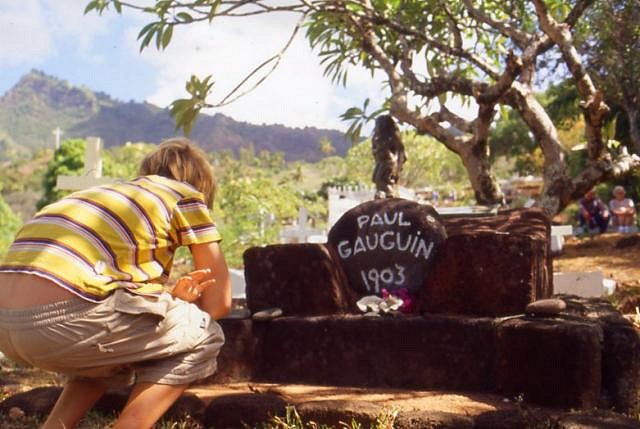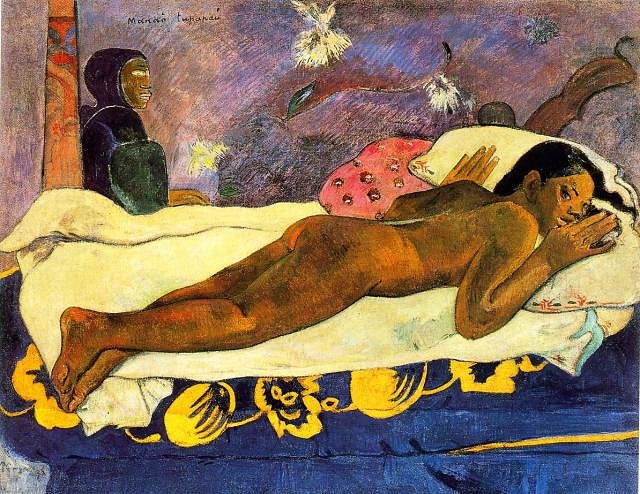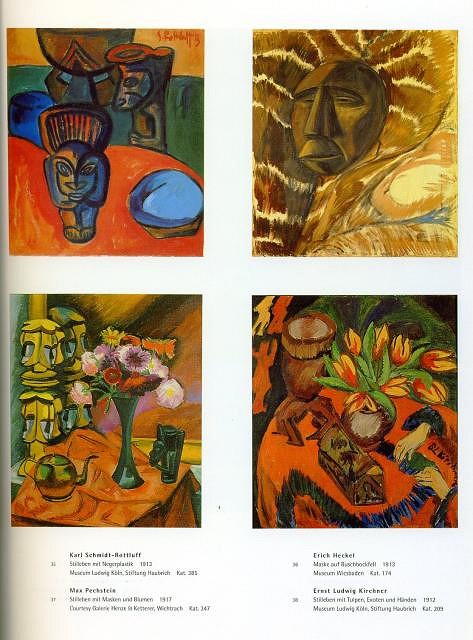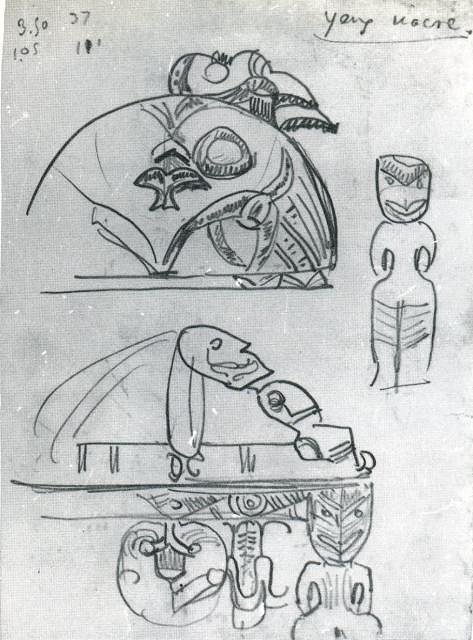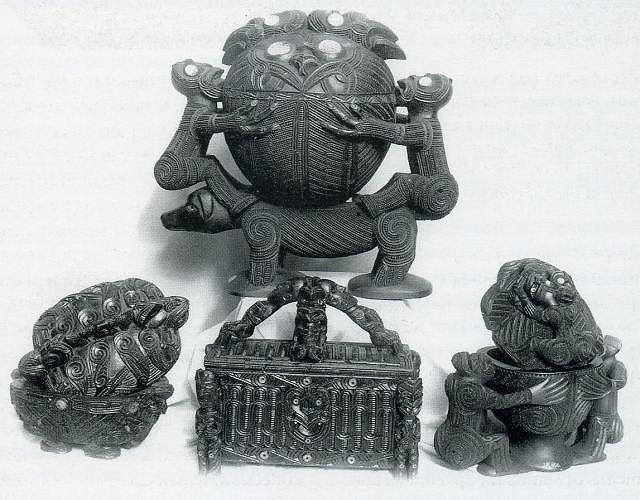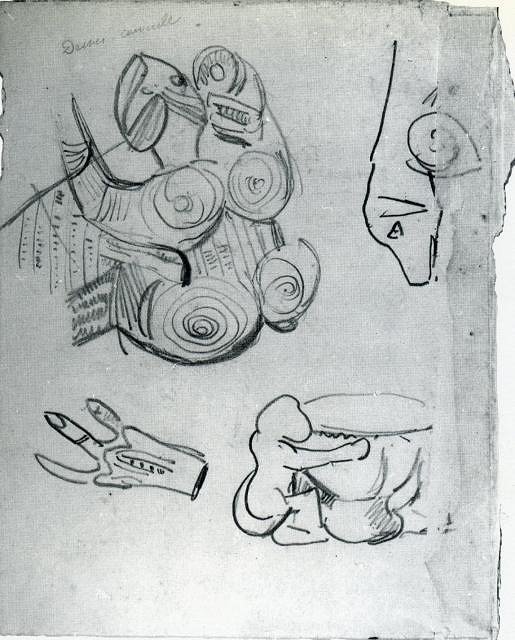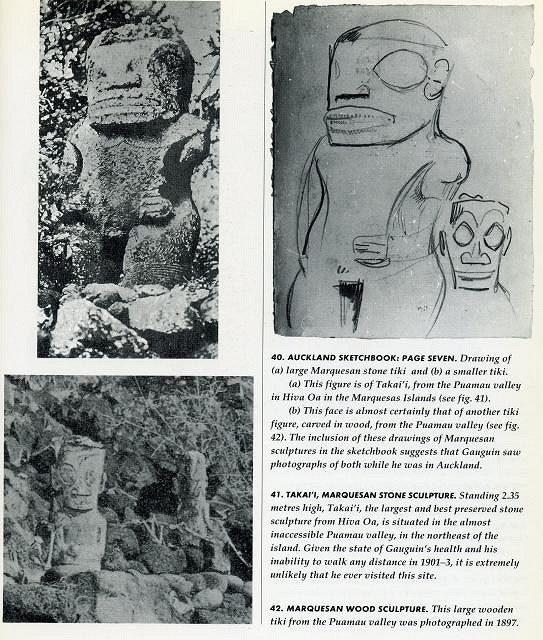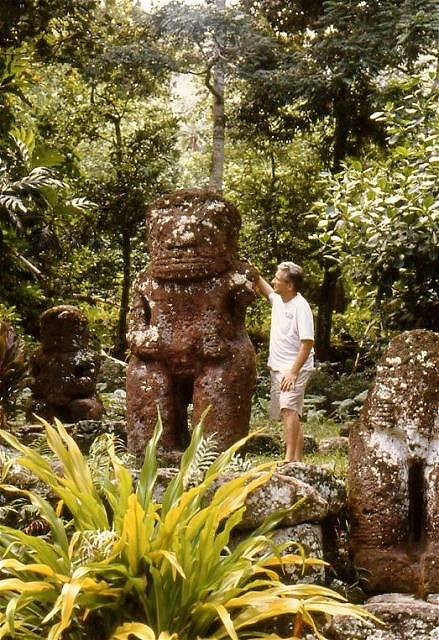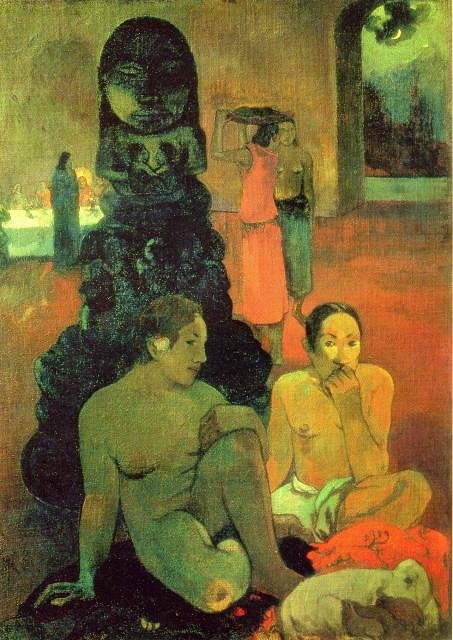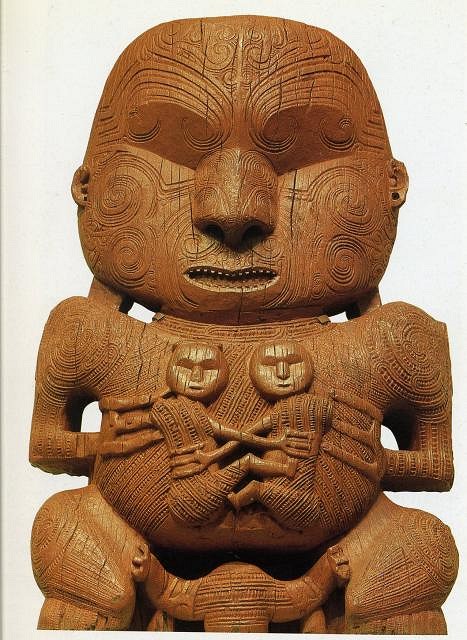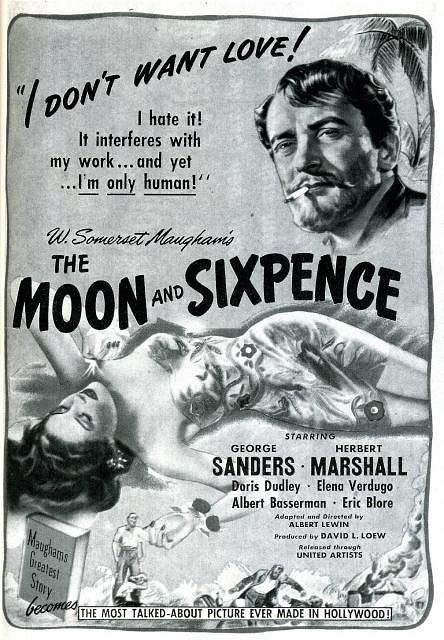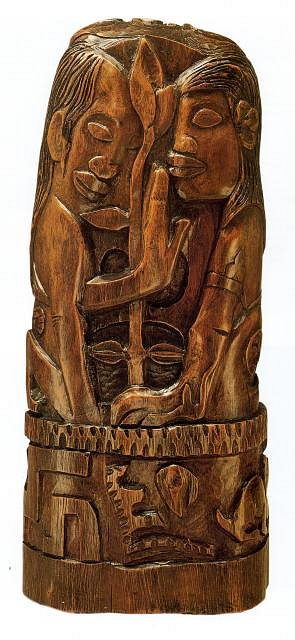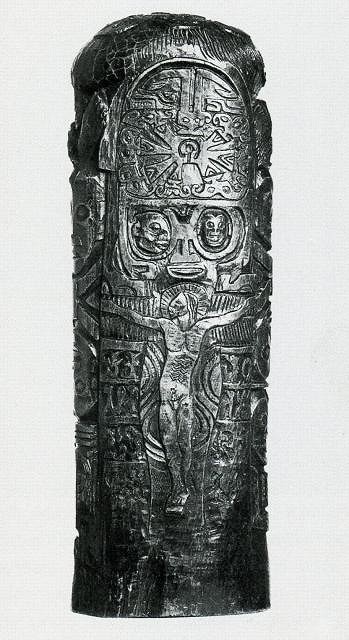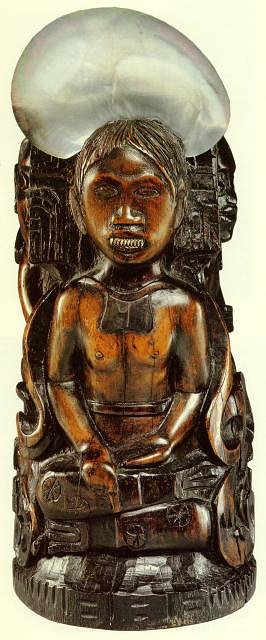Tiki Central / General Tiki / Paul Gauguin
Post #440951 by bigbrotiki on Wed, Mar 18, 2009 3:04 PM
|
B
bigbrotiki
Posted
posted
on
Wed, Mar 18, 2009 3:04 PM
Indeed, Zeta, a nice long post on one of my pet subjects! Some, but few, Polynesian bars used Gauguin's art as decor. Here is a well-known example from the BOT, this time in full size, from Tiki Bob's:
There also is a dive bar (forgot the name) on the Florida coast that has some very nice Gauguin murals. Paul Gauguin actually died on Hiva Oa in the Marquesas Islands, in 1903. He had moved there to escape the "fake French atmosphere" of Papeete. Here is my son Diego at his grave in 2002:
I have always been intrigued by the fact that, though he was the first to utilize the dream of the Polynesian lifestyle as an anti-bourgeois, bohemian ideology in his life and work, he rarely employed Polynesian art to do so. Though he did sketch Polynesian sculpture in his sketchbooks, he did not copy it directly to his paintings. Most of his depictions of "idols" and "gods" were symbolically stylized into Asian or humanoid figures:
Maybe the time was not ripe yet for primitive art. Or was he distracted by something else? :D
In 1895, on his second trip to Tahiti, Gauguin spent 10 days in New Zealand and made several sketches of Maori Tiki carvings he saw at the Auckland museum:
He also copied some Marquesan Tikis from photos:
Here is a recent photo of Takai, the largest Marquesan stone Tiki, (and me in 2002):
I can only think of ONE painting where Gauguin directly referenced a Tiki statue, his 1897 "The Idol":
It clearly is taken from this Maori gateway carving (Gauguin probably obtained a photo of it at the Auckland museum):
Interestingly, this is the statue that is featured in the movie version of "The Moon and the Sixpence", on Strickland's (Gauguin's) table in Paris, and at the end of the film, engulfed in flames.
I really love Gauguin's CARVINGS, which though again never full-fledged Tikis, are THE first Western interpretations of Polynesian sculpture:
[ Edited by: bigbrotiki 2009-03-18 15:06 ] |

